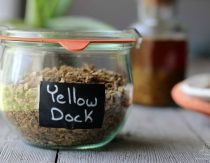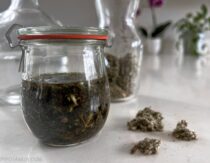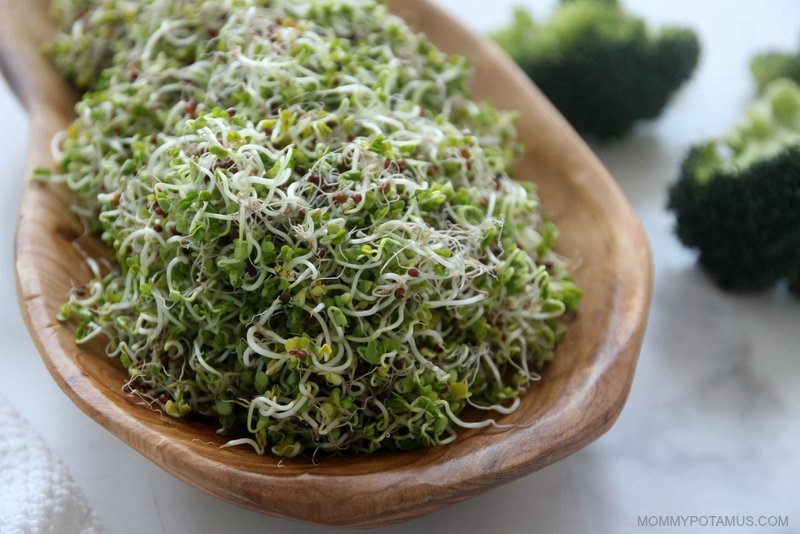
Usually when I hear about the discovery of a potent phytochemical, I expect it to come from a rare Amazonian berry or Siberian root . . . not something that’s in my refrigerator crisper drawer right now (and probably yours). Yet one of the most exciting recent discoveries – sulforaphane – is probably in your kitchen right now.
With all the amazing phytochemicals out there, you might be wondering why this one deserves its own article. We’ll dive deeper into the details below, but here’s the gist:
Sulforaphane is the most powerful activator of the Nrf2 gene pathway that we know of. Nrf2 controls over 200 genes that play a huge role in detoxification, antioxidant protection, and cellular resilience and has been called a “Guardian of Healthspan” and “longevity pathway.”
In other words, activating Nrf2 is a pretty big deal.
Before we dive into the details, I want to mention that none of these statements have been evaluated by the FDA, this article is not medical advice, and it is not meant to diagnose or treat any condition. As always, please talk with your healthcare provider about any supplements you are considering. Now that we’ve got that out of the way, let’s dive in.
What is sulforaphane?
As you might have guessed from its name, sulforaphane (SFN) is a sulfur-rich compound that is found in cruciferous vegetables like broccoli, cabbage, cauliflower, collard greens, kale, radishes, Brussels sprouts, Bok choy, turnips, arugula, kohlrabi, kale, watercress, rapini, mustard greens, and horseradish. It’s especially abundant in broccoli sprouts.
However, most of us prepare these veggies in ways that deactivate sulforaphane, so I’ll share some tips for consuming it later in this article.
Also, if you’re looking for a way to get a more concentrated form, this is the sulforaphane supplement I use.
Sulforaphane + Nrf2 = Detox Powerhouse
The discovery of sulforaphane can be traced back to twenty bucks, a trip to the grocery store, and a Johns Hopkins University researcher named Paul Talalay.
Talalay sent one of his students, Hans Prochaska, to pick up fruits and veggies because he’d noticed two things:
- People who eat lots of fresh produce have a lower risk of certain diseases
- Our cells “possess a network of enzymes” that can act as internal “defenses against the everyday ravages that can assault a cell: oxidative stress, toxic DNA-damaging chemicals, inflammation, and solar radiation.” (1)
He theorized that these two things may be connected, and that phytochemicals in fruits and veggies may activate the enzymes in our bodies or the genes that control them, “inducing them to ramp up activity that normally functions at less-than-maximum capacity.”
Talalay’s research led to the discovery of sulforaphane, which turned out to be a “potent inducer” of the Nrf2 gene pathway, which triggers the release of protective enzymes that:
- Help us detox
- Protect against oxidative stress and inflammation
- Play a role in autophagy (cellular cleanup mode) (1) (2)
Sulforaphane is the most powerful naturally occurring activator of Nrf2 that we know of. (3) Every single cell in our bodies contains a Nrf2 protein, which may be why sulforaphane has such a powerful effect on the whole body.
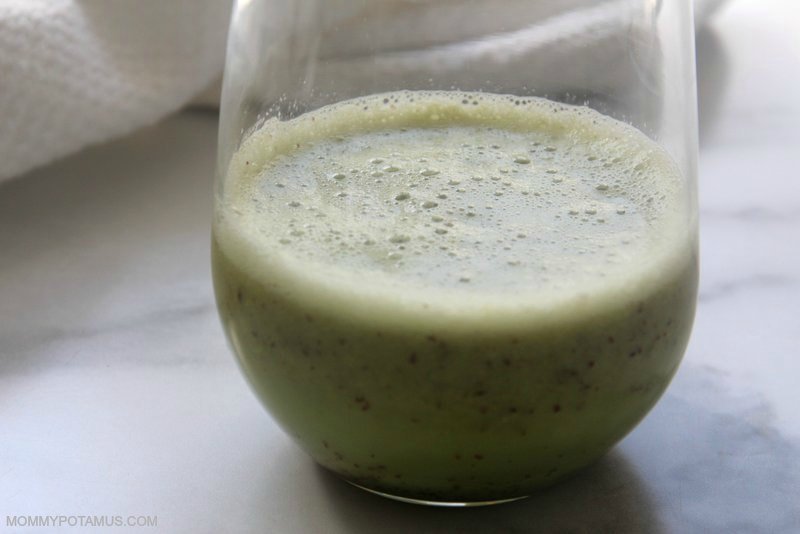
4 Benefits of Sulforaphane
Although it’s being studied for a variety of health benefits, not all have a lot of supportive research yet. Here are the most research-backed benefits we know of right now:
1. Detoxification
If you’ve ever decided to deep clean your house and then stopped about halfway through because you’re just exhausted, you already pretty much know what happens when the body gets stuck in phase I of the detoxification process. Here’s how it’s supposed to work:
Phase I Detox
Because you live in the real world and not a pristine bubble, your body may be exposed to a pesticide residue on your morning walk, benzene from the scented candle burning at a friend or family member’s house, other carcinogens, heavy metals, mold toxins, etc.
Fortunately, you have a helpful family of isoenzymes (mostly cytochrome P450) that jump into action and start breaking down the toxins so that they can be cleared away. In addition to toxin exposure, certain herbs, nutrients and minerals also activate Phase I detox in a positive way.
Sounds great, right? It is, except part of breaking down toxins is to OXIDIZE them, which generates a lot of free radicals.
That’s fine if they’re removed from the body quickly, but if they aren’t they can cause accelerated aging by damaging cells, proteins, organs and even our DNA. In fact, sometimes the free radicals created by Phase I detox are more damaging than the original substance that a person was exposed to.
Phase II Detox
In Phase II, the Nrf2 pathway creates detoxification enzymes that further neutralize the toxins and/or make them easy to excrete. That’s how it’s supposed to work, at least.
One primary component of Phase II detox is glutathione, which is the body’s master antioxidant. Unfortunately, a lack of restful sleep, chronic stress, infections, and a poor diet can all deplete glutathione, and when we don’t have enough it can impair Phase II detox. (4)
Sulforaphane supports detoxification by activating the Nrf2 pathway, which triggers the production of a wide variety of beneficial Phase II detoxification enzymes along with glutathione. In fact, it is the most potent activator of Nrf2 that we know of.
When Phase II is working well, it naturally leads to Phase III, which is the excretion of toxins. For example in one study, people that consumed a drink made with broccoli sprouts experienced a 61% increase in benzene excretion on the first day they drank it . . . a trend which continued for the entire 12 weeks of the trial. (5)
“We thought the pathway might respond initially, and then the [compounds] would wear out their welcome and the body would tune out,” Thomas Kensler, a researcher at both Johns Hopkins and the University of Pittsburgh School of Medicine and an author of the study, told NPR’s The Salt. “But the effect was just as vigorous at the beginning as at the end, which suggests that over one’s lifetime, you could enhance this preventative activity in the body [with food].””
2. Supports A Healthy Inflammatory Response
If you’ve ever seen a rusty pipe, you’ve seen what oxidative stress does to metal. The effect is similar in our bodies, which is why it was described as “brain rust” in the Journal of Nutritional Neuroscience. Basically, when our bodies produce more free radicals than they can eliminate, it causes oxidative stress that can lead to chronic inflammation.
Sulforaphane is considered an indirect antioxidant, which means that it doesn’t react with free radicals directly, but it signals to the body to create a wide variety of protective enzymes such as glutathione that do counteract oxidative stress. In this way it supports a healthy inflammatory response.
3. May Support Brain Function
Animal studies suggest that sulforaphane supports healthy levels of brain-derived neurotrophic factor (BDNF), which has been called “Miracle Gro for Your Brain.” (6) (7)
BDNF is a “neurotrophin that supports the survival of existing neurons and encourages the growth and differentiation of new neurons and synapses.” (6)
Research shows that intense exercise, sun exposure, intermittent fasting, and the activation of heat shock proteins (like those created when sitting in an infrared sauna) all increase BDNF as well. (8) (9) (10) (11) (12)
4. Activates Cellular “Cleanup Mode”
In addition to supporting the removal of toxins, sulforaphane appears to encourage the body to cleanup naturally occuring cellular debris via a process called autophagy. (13)
Literally translated as “cellular eating,” autophagy occurs when a bunch of little guys called lysosomes go around gobbling up dysfunctional cells and damaged mitochondria.
These lysosomes and mitochondria are good guys, giving us energy for vitality and cellular regeneration for a vibrant life. Without them, our body fills up with cellular trash and we just can’t function as optimally as possible.
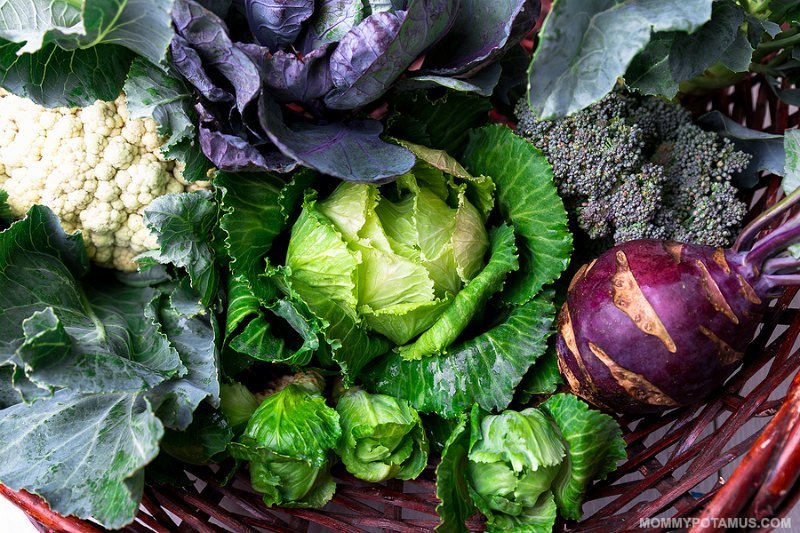
Food That Are Rich In Sulforaphane
The amount of glucoraphanin – which is the inactive form of sulforaphane – can vary widely in cruciferous vegetables. I’m going to share how to convert it to activated sulforaphane in just a sec, but first let’s just cover how much potential each veggie has to make it.
Broccoli has the highest amount of glucoraphanin of all the cruciferous vegetables, and broccoli sprouts contain 10-100 times more glucoraphanin than mature broccoli. (14) (15)
The foods richest in glucoraphanin – which can be converted to the active form of sulforaphane when prepared properly – are:
- Broccoli sprouts
- Broccoli (when prepared properly)
Lots of other cruciferous veggies also contain glucoraphanin, including:
- Arugula
- Bok choy
- Brussels sprouts
- Cabbage
- Cauliflower
- Collard greens
- Horseradish
- Kale
- Kohlrabi
- Mustard greens
- Radishes
- Turnips
- Watercress
Best Ways To Consume Sulforaphane
Here’s the most important thing you need to know about consuming sulforaphane:
Glucoraphanin + Myrosinase = Sulforaphane
- The inactive form of sulforaphane –glucoraphanin– is a compound that is part of a chemical family called glucosinolates.
- When cruciferous veggies are chewed, chopped, crushed, or blended, they release an enzyme called myrosinase that activates sulforaphane.
However, myrosinase is heat sensitive, so when veggies are heated too much it inactivates the enzyme and the sulforaphane doesn’t get converted to its active form. Fortunately, there are several ways to enjoy your veggies with the sulforaphane activated.
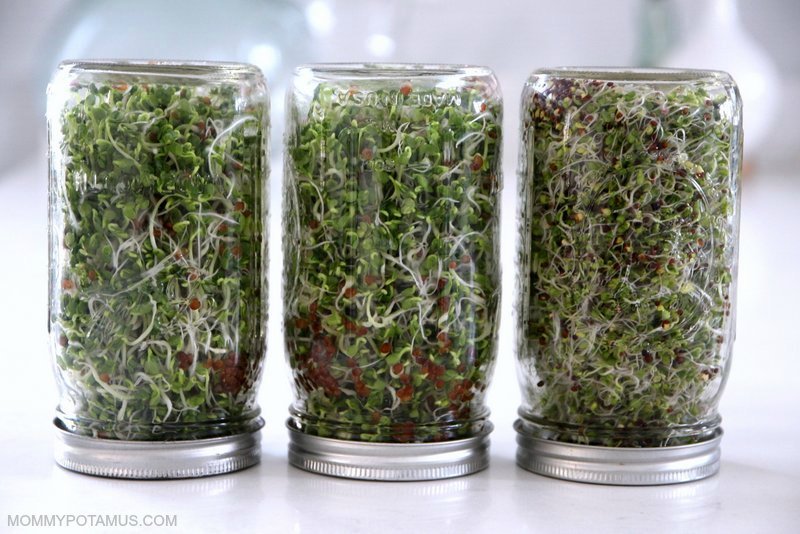
1. Broccoli Sprouts
Young broccoli sprouts contain 10-100 times more glucoraphanin than other cruciferous veggies, including mature broccoli. (15)
Since sprouts are not usually heated there’s no risk of inactivating the myrosinase. Just make sure you chew them really well or blend them in a blender before consuming.
Tip: If you’re sprouting your own, three-day old sprouts have the highest levels of glucoraphanin. I usually harvest mine on day three or four. Also, radish sprouts contain lots of myrosinase, so mixing them with broccoli sprouts may increase the amount of sulforaphane that is activated.
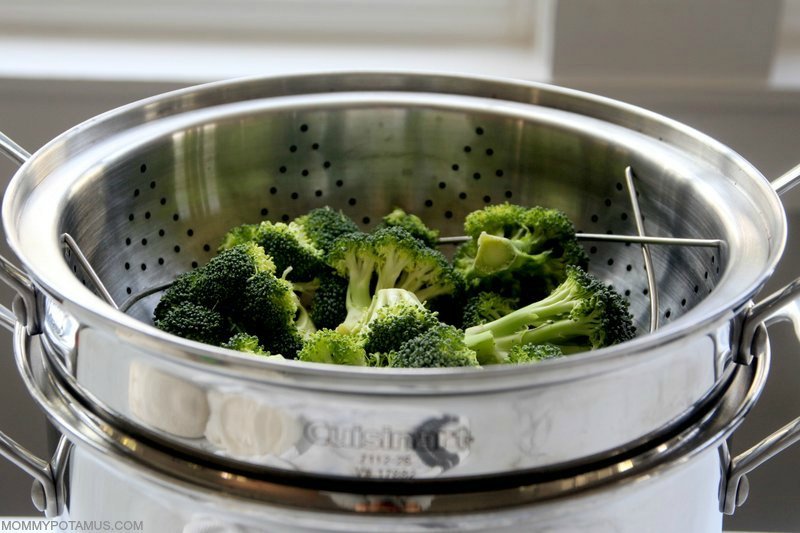
2. Lightly Cook Cruciferous Veggies
Excessive heat deactivates the enzyme myrosinase, which is needed to convert sulforaphane to its active form. Here are some ways researchers have found helpful for keeping myrosinase intact:
- Steaming for 3-4 minutes (16) (17)
- Chopping finely and stir-frying for 4 minutes. Tip: Letting the chopped broccoli rest for up to 90 minutes at room temperature before adding it to stir fry increases the amount of activated sulforaphane present. (18)
- Eat them raw, like in this broccoli grape slaw
- Cook them as usual, then top them with raw ground mustard seeds before serving. Raw mustards seeds contain myrosinase, and one study found that adding it to cooked broccoli increased the amount of bioavailable sulforaphane by four times. (19)
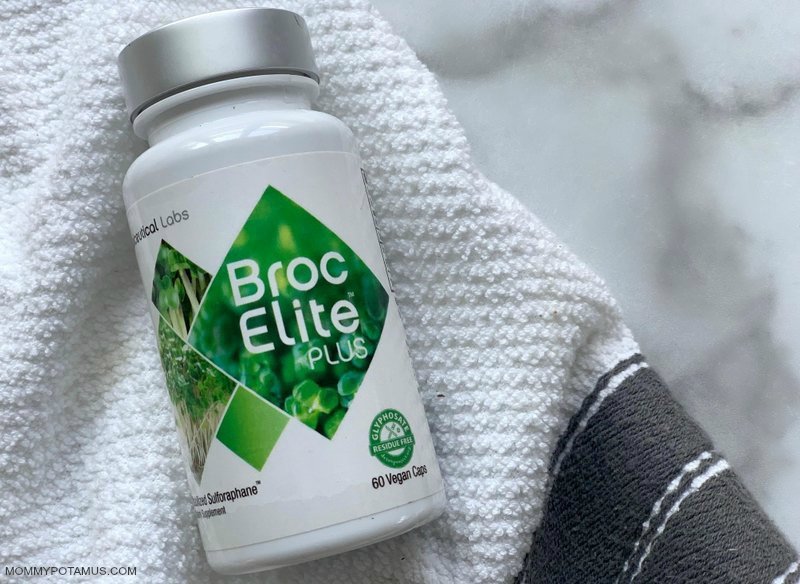
3. Sulforaphane Supplements
If you’re thinking, “Goodness, I want to increase my sulforaphane intake but I don’t want to rinse sprouts every day or mince my broccoli and let it rest,” I hear you. My life is too full to consistently do all of that, too, which is why if you looked in my fridge right now you’d find BrocElite. (I do actually grow broccoli sprouts pretty often, but not enough to eat every day.)
Although sulforaphane extracts have been used with good results in clinical trials, often the preparations were made specifically for the study and are not commercially available.
When researching available options, I chose Brocelite because it uses a stabilized form of activated sulforaphane instead of just the precursors like other brands. Although in theory the precursors should form sulforaphane just like they do when broccoli sprouts are consumed, according to the Johns Hopkins School of Medicine Chemoprotection Center, they only have about 35% bioavailability. (20)
While that’s actually better than some antioxidants, activated sulforaphane is about 70% bioavailable. (20)
Developed by four scientists (and friends) from Johns Hopkins University and Stanford, Brocelite is the only activated sulforaphane supplement that is naturally stabilized. Two capsules contain 10 milligrams of shelf-stable sulforaphane, which is about the equivalent of drinking about 3 oz of fresh juice made from broccoli sprouts harvested on the 3rd day.
Click here to check out Brocelite
Sources
1. Johns Hopkins Medicine Institute for Basic Biomedical Sciences. More Reasons To Eat Those Vegetables.
2. Lewis, Kaitlyn et al. (2010) Nrf2, a Guardian of Healthspan and Gatekeeper of Species Longevity.
3. Kensler, TW et al. (2012) Keap1-nrf2 signaling: a target for cancer prevention by sulforaphane.
4. Moyer, Ann M. et al (2011) Acetaminophen-NAPQI Hepatotoxicity: A Cell Line Model System Genome-Wide Association Study
5. Egner, Patricia A. et al (2014) Rapid and Sustainable Detoxication of Airborne Pollutants by Broccoli Sprout Beverage: Results of a Randomized Clinical Trial in China
6. Kim, Jisung et al (2016) Sulforaphane epigenetically enhances neuronal BDNF expression and TrkB signaling pathways
7. Bergland, Christopher (2016) This Is Why Aerobic Exercise Is ‘Miracle-Gro’ for Your Brain
8. Sleiman, Sama et. al. (2016) Exercise promotes the expression of brain derived neurotrophic factor (BDNF) through the action of the ketone body β-hydroxybutyrate
9. De la Rosa, Adrian (2019) Long-term exercise training improves memory in middle-aged men and modulates peripheral levels of BDNF and Cathepsin B
10. Molendijk, Marc et. al. (2012) Serum BDNF Concentrations Show Strong Seasonal Variation and Correlations with the Amount of Ambient Sunlight
11. Mattson, Mark (2005) Energy intake, meal frequency, and health: a neurobiological perspective
12. Piepmeier, Aaron (2014) Brain-derived neurotrophic factor (BDNF) as a potential mechanism of the effects of acute exercise on cognitive performance
13. Liu, Hanruo (2017) Sulforaphane promotes ER stress, autophagy, and cell death: implications for cataract surgery
14. Houghton, Christine et. al. (2016) Sulforaphane and Other Nutrigenomic Nrf2 Activators: Can the Clinician’s Expectation Be Matched by the Reality?
15. Yang, Li et. al. (2016) Frugal Chemoprevention: Targeting Nrf2 with Foods Rich in Sulforaphane
16. Rungapamestry, Vanessa et. al. (2006) Changes in glucosinolate concentrations, myrosinase activity, and production of metabolites of glucosinolates in cabbage (Brassica oleracea Var. capitata) cooked for different durations
17. Rungapamestry, Vanessa et. al. (2007) Effect of meal composition and cooking duration on the fate of sulforaphane following consumption of broccoli by healthy human subjects
18. Dean, Signe (2018) Scientists Have Found a New, Healthier Way to Cook Broccoli
19. Okunade, Olukayode et. al. (2018) Supplementation of the Diet by Exogenous Myrosinase via Mustard Seeds to Increase the Bioavailability of Sulforaphane in Healthy Human Subjects after the Consumption of Cooked Broccoli
20. Johns Hopkins University School of Medicine Chemoprotection Center. Frequently Asked Questions


